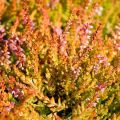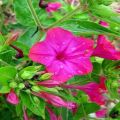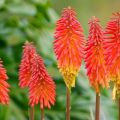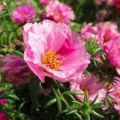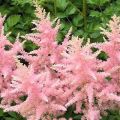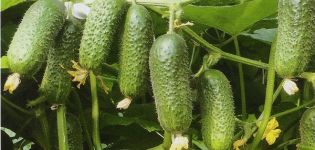Description of the 37 best varieties of white alstroemeria, cultivation technology
Alstroemeria white is called the Peruvian variety of lilies, which previously grew only in the southern part of America. Today this plant is grown by flower growers all over the world. Before planting a flower, you must familiarize yourself with its varieties and recommendations for growing.
Content
- 1 Description and features
- 2 Growing through seedlings
- 3 Care rules
- 4 Reproduction
- 5 Types and varieties
- 5.1 Alicia
- 5.2 Beauty
- 5.3 Harmony
- 5.4 Canaria
- 5.5 King Cardinal
- 5.6 Regina
- 5.7 White Wings
- 5.8 Virginia
- 5.9 Orange Queen
- 5.10 Golden
- 5.11 Orange
- 5.12 Princess lilies
- 5.13 Peruvian
- 5.14 Brazilian
- 5.15 Nano
- 5.16 Lemon
- 5.17 Haemantha
- 5.18 Camilla
- 5.19 Sarah
- 5.20 Ella
- 5.21 Inka Ice
- 5.22 Brazilian lily
- 5.23 Blue
- 5.24 Purple or Lilac
- 5.25 Garda
- 5.26 Diva
- 5.27 Pink
- 5.28 Burgundy
- 5.29 Mix
- 5.30 Amethyst
- 5.31 Hawaii dream
- 5.32 Batian
- 5.33 Voyager
- 5.34 Araminta
- 5.35 Blue
- 6 Sapling selection rules
- 7 Features of growing at home
- 8 How to grow in a greenhouse for cutting
- 9 Use in landscape design
- 10 Conclusion
Description and features
Flowers such as alstroemeria are often used in wedding bouquets. Their distinctive features include tallness, resistance to certain diseases and temperature changes. Lily seedlings have straight stems on which thin leaves are formed. Each plant forms about 5-6 flowers with snow-white petals.
Growing through seedlings
Most often, lilies are grown in seedlings, and therefore you need to familiarize yourself with how to do this in advance.
Timing
First, you need to determine the optimal time for planting planting material. Experts advise planting seeds in February or early March in order to transplant seedlings outside in late spring.
Preparation of planting material
Having decided on the timing of planting, they are preparing seeds. All seeds are pre-disinfected with potassium permanganate, which destroys pathogens. Then the seeds are soaked for 1-2 days in warm water.
Tank and soil preparation
Peat glasses must be used as a container for germinating flower seedlings. They are pre-filled with water, after which they are filled with soil. Soil mixture for alstroemeria should consist of:
- peat;
- sand;
- compost;
- black soil.

How to plant
Planting lily seeds is very simple. To do this, small holes are made in each peat container, in which one seed is planted. After planting, the holes are covered with earth and watered.
Temperature regime
When growing alstroemeria, you need to monitor the air temperature. It is necessary to maintain it at 15-16 degrees Celsius. At lower rates, seedlings will slow down growth.
Watering
Without regular watering, the seedlings will dry out over time, and therefore it is recommended to periodically moisturize the lilies. Florists are advised to water them twice a week.
Top dressing
It is necessary to feed the seedlings in the spring, from the beginning of April. Mineral dressings and organic compounds are added to the soil. You need to feed the bushes 3-4 times per season.
Dive
They are engaged in diving only if there are too many seedlings. They will have to be seated in separate containers.

Hardening
Hardening will help to grow strong seedlings with resistance to temperature changes. In mid-April, sprouted seedlings are taken out for a day. After sunset, they are brought into the room.
Landing in open ground
When it gets warmer outside, the seedlings are transplanted into open ground.
Seat selection
When choosing a place, pay attention to its protection from wind gusts. It is also better to choose areas that are illuminated by diffused light, as direct sunlight can harm.
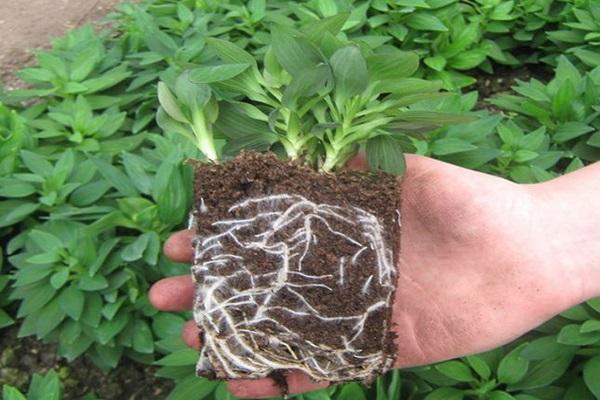
Ground requirements
The soil should be loosened and saturated with nutrients. The acidity level should not be too high. Experts advise planting lilies in areas with clay or sandy soil.
Landing scheme
Before disembarking, rows are marked on the site, after which holes are dug at a distance of 20 centimeters from each other. The depth should be such that the root fits completely into the hole.
Care rules
Alstroemeria needs proper care, and therefore you need to figure out how to care for it.
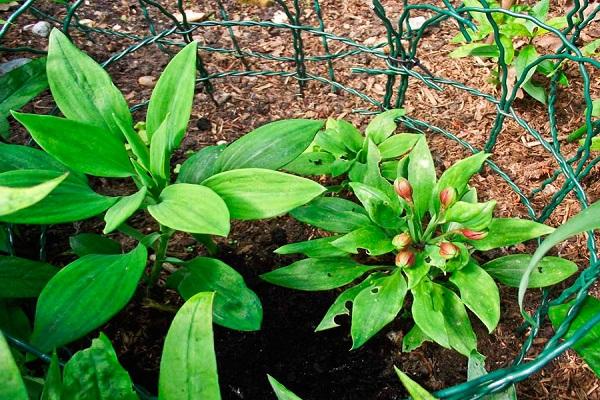
Watering
With frequent rains, the flower should be watered no more than once a week. However, during severe droughts, the soil is moistened every two days. One and a half liters of water is consumed for each alstroemeria bush.
Top dressing
In order for the plant to bloom better and grow faster, it must be fed with organic matter 2-4 times a month. When the active growth of leaves begins, phosphorus-containing dressings are added to the ground.
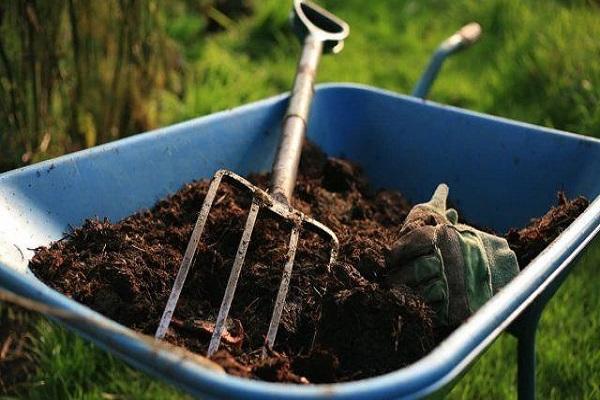
Weeding and loosening
After each watering, the soil must be loosened with a hoe to prevent crust formation. Also, the area should be weeded once a month so that there are no weeds on it.
Protection against diseases and pests
Lilies, like other flowers, are attacked by pests and suffer from various diseases.
Slugs
These are dangerous pests that appear on the surface of alstroemeria leaves and gradually eat up the leaf plate. If slugs appear on the foliage, you will have to collect them by hand.
Thrips
Thrips are small pests that often appear on flowers and vegetables. Such chemicals as Fitoverm, Confidor and Inta-Vir will help to get rid of them.
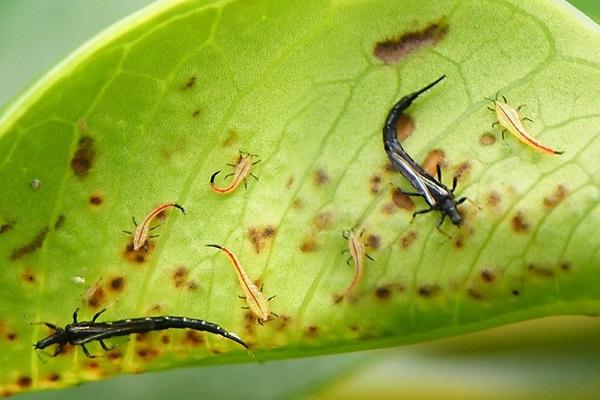
Spider mite
The appearance of a spider mite on the seedlings leads to the drying of the foliage and the death of the plant. To get rid of the pest, you need to treat the seedlings with soapy liquid and warm water.
Leaf-eating caterpillars
The appearance of cavities on the leaf plates indicates an attack by caterpillars. Bordeaux mixture, soap solution and chemicals from pests will help get rid of them.
Whiteflies
This pest appears on flowers that are grown in high humidity conditions. To prevent the insect from appearing on the lilies, you need to properly water the bushes.
Gray rot
Rotting stems and leaves of alstroemeria indicates the development of gray rot. It is not easy to cure this disease, and therefore it is better to dig up and burn the infected bushes.
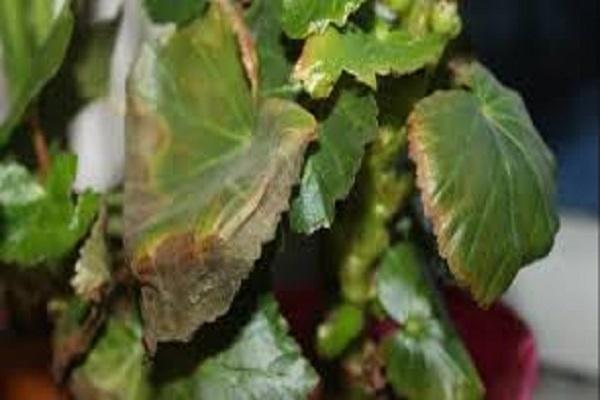
Mulching
Experts recommend mulching the seedlings so that they bloom more abundantly. It is advised to use wood ash, peat or sawdust as mulch.
Pruning
If the plant has too many shoots and leaves, you will have to prune. All branches that do not have inflorescences are cut from the bush. Yellowed leaves are also removed.
Preparation for wintering
Winter is a dangerous time of the year for white alstroemeria. Therefore, in order to preserve lilies, you need to figure out how to prepare them for wintering. When autumn begins and the first night frosts appear, experts advise to dig up the flowers and store them indoors until spring.
Reproduction
There are two ways to breed white alstroemeria.

Seeds
Sometimes people propagate seedlings using seeds. Seeds are planted at the end of February or in the first half of March. The main disadvantage of this method is late flowering..
Rhizome division
Rhizomes of plants are divided in early autumn, before a cold snap. Experts recommend dividing the roots of adult plants from the age of three years.
Types and varieties
There are several varieties and varieties of flowers that you need to familiarize yourself with before planting.
Alicia
This is a hybrid variety of alstroemeria that looks like a common chrysanthemum. Alicia's petals are snow-white with a barely noticeable pinkish tint.
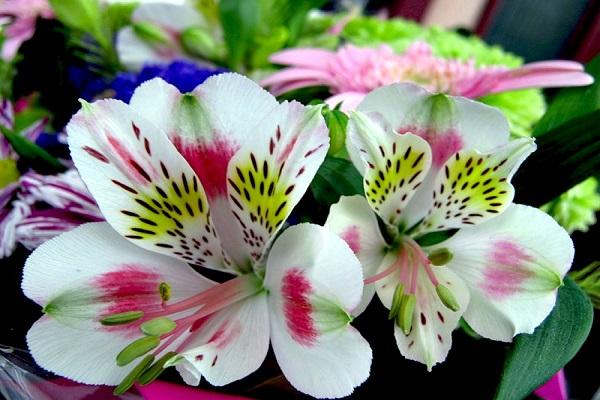
Beauty
This is a unique flower that blooms in early summer. Its buds can be colored lilac, lilac and light blue. The advantages of Beauty include the fact that it blooms again in the fall.
Harmony
Tall sapling with strong stems, Harmony's height is one and a half meters. The variety has an early flowering and begins at the end of April. The flowers are bronze, with a blue tint.
Canaria
Tall bush with plump shoots. Canaria blooms in early June. Flowering lasts until the first frost in October. The flowers are colored golden.
King Cardinal
One and a half meter sapling with small scarlet peduncles. King Cardinal is necessarily grown under the sun, since without light it will not bloom. The flowering of the alstroemeria variety ends in autumn.
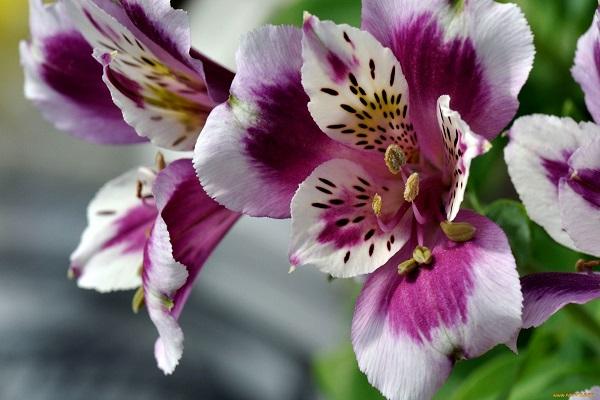
Regina
A popular plant among gardeners, which is often grown to decorate flower beds. Regina's leaf plates are greenish, and the flowers are pink. Blooms after June 20th.
White Wings
A tall sapling with a height of two and a half meters. White Wings has large green leaves. This alstroemeria blooms throughout the summer.
Virginia
A medium-sized variety, the bushes of which do not grow taller than seventy centimeters. Virginia has a powerful stem covered with green foliage. Flowering starts from June 10-15.
Orange Queen
Another medium-sized alstroemeria seedling that is frost-resistant. Orange Queen petals have an apricot shade with a slight golden tint.
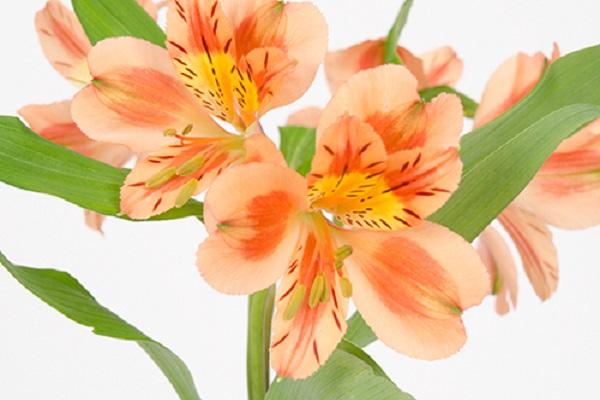
Golden
This variety is most common in the wild. Golden Alstroemeria gets its name from the bright yellow flowers that bloom in early summer.
Orange
A herbaceous perennial seedling of alstroemeria found in the tropical United States. The height of the flower is 80-90 centimeters. Orange has a powerful rhizome and a strong stem.
Princess lilies
A compact flower that many people plant in pots. Princess lilies are 30-45 cm tall. A purple bud blooms at the end of the first month of summer.
Peruvian
Growers living in cool climates can plant Peruvian Alstroemeria. This flower is resistant to temperature drops.
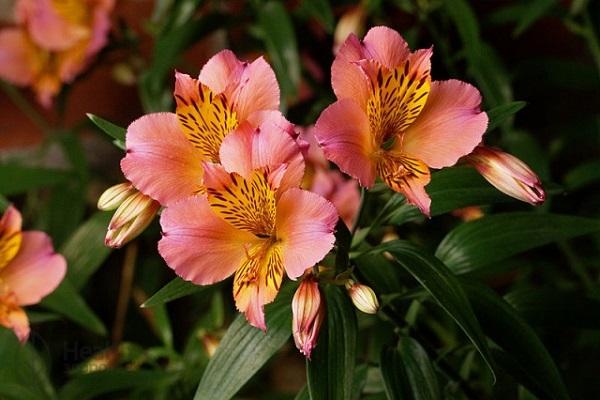
Brazilian
It is considered one of the tallest varieties of alstroemeria, since the average height of the bush is 200-250 centimeters. A distinctive feature of the plant is its resistance to high humidity and drought.
Nano
A well-known Peruvian variety, popular with gardeners. Nano is the most compact, its stem does not exceed ten centimeters in height. Blooms until autumn.
Lemon
It is a common cultivar and is often used to decorate flower beds. A distinctive feature of Lemon is its large golden flowers.
Haemantha
This variety is native to South America, but now it is grown in almost every country. It differs from other types of alstroemeria in the rapid growth of the stem, abundant flowering and reliable roots.
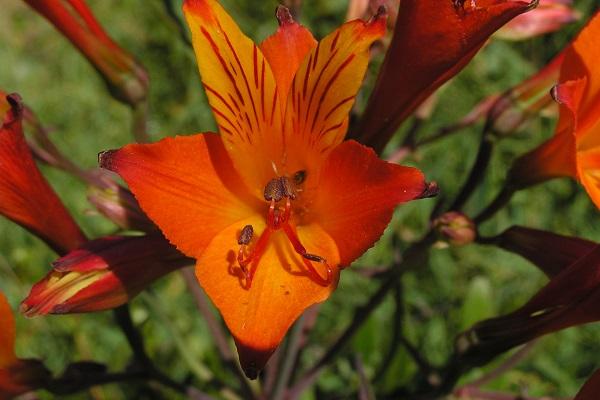
Camilla
A medium-sized flower shrub of alstroemeria, grown in the open field. The peculiarities of this plant include pink flowers, on the surface of which there are dark stripes.
Sarah
An ornamental variety with fragrant flowers that bloom in summer. The height of the bush does not exceed 50 centimeters, which allows you to grow the plant in pots.
Ella
This variety is resistant to low temperatures and therefore can be planted directly outdoors. Ella's buds are pink and bloom after May 25.
Inka Ice
A yellowish flower with a pink tint on the surface of the petals. Inca Ice, like other varieties of alstroemeria, begins to bloom in the summer.
Brazilian lily
A tall type of lily that grows up to 220 centimeters in the open field. Brazilian Alstroemeria is known for its abundant bloom that begins in July.

Blue
Blue Alstroemeria will help to decorate flower beds, summer cottages and lawns. Its bluish petals go well with most flowering plants.
Purple or Lilac
Wedding bouquets and flower arrangements are often made from Lilac or Violet alstroemeria. It is a short and compact shrub 20-25 cm in height, blooms in late spring.
Garda
This is a snow-white flower that is resistant to low temperatures and drought. Garda grows up to 180 cm, requires a garter to support and pinning.
Diva
A medium-sized pink flower popular with florists. Differs in long flowering, which lasts for two months.
Pink
A flower with thin pink petals that bloom in June. It does not tolerate frost, and therefore is sometimes grown indoors.

Burgundy
Gardeners who want to grow unusual flowers can plant Burgundy Alstroemeria in the garden. Its dark petals stand out prominently against most flowers.
Mix
A medium-sized flower bush, whose main stem can grow up to seventy-five centimeters. On each branch of the seedling, 5-6 white buds are formed.
Amethyst
Lovers of compact flowers should cultivate Amethyst. The seedling buds have a purple hue, bloom until September.
Hawaii dream
The most aromatic cultivar, which gives off a pleasant smell at the beginning of flowering. The petals of the Hawaii Dream are light pink.

Batian
It is a unique lily that blooms in mid-May. Batian inflorescences are bicolor, they are painted in purple and white shades.
Voyager
It is a lush shrub with dark green foliage. Voyager grows up to 75 cm, the diameter of the flowers is 7-8 cm.
Araminta
The main feature of Araminta is that it grows rapidly. Experts advise to regularly thin out the planting and remove excess seedlings.
Blue
A variety with bright blue flowers that bloom in summer until the first days of autumn. The flower does not tolerate frost, and therefore it must be dug out before winter.
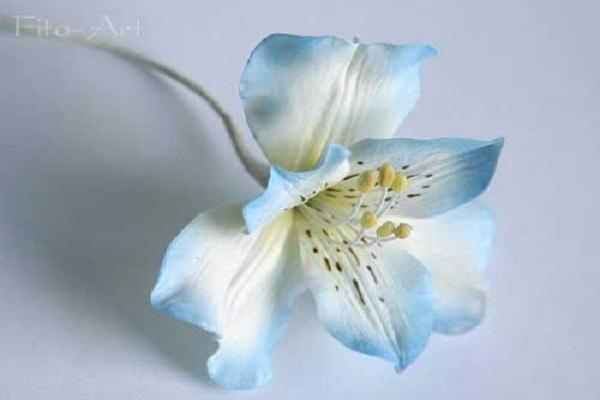
Sapling selection rules
Before planting alstroemeria, you have to deal with the choice of a seedling. When choosing, pay attention to the root system. She must be powerful and fully formed. Also, the stems with foliage are carefully examined, they should not be stained or yellowed.
Features of growing at home
In order to grow an indoor flower alstroemeria at home, it must be properly looked after. The plant needs regular watering with warm water and top dressing. Organic and mineral fertilizers are applied three times per season. If necessary, the seedlings are tied up and cut off.
How to grow in a greenhouse for cutting
When growing a flower in a greenhouse, you must carefully monitor the humidity. There should be no high humidity in the greenhouse structure, as it can cause seedlings to get sick.
Florists recommend that you regularly ventilate the greenhouse to ensure normal air circulation.

Use in landscape design
Alstroemeria is often used in landscape design. It goes well with flowers when decorating flower beds, garden paths, lawns and flower beds. From tall seedlings, you can create a background in a group flower garden.
Conclusion
Florists who are going to cultivate alstroemeria should prepare for this in advance. You should deal with the best varieties of this flower, as well as with the nuances of its cultivation.


